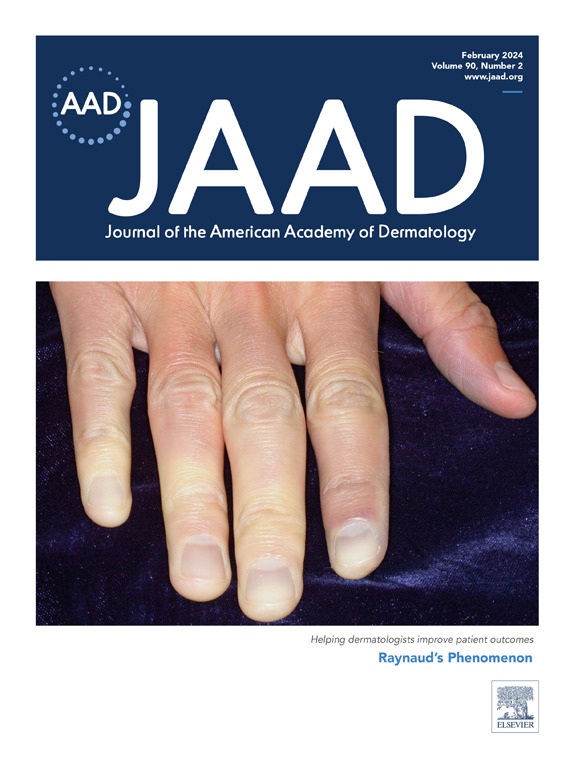Investigating the role of dietary glycemic factors and antioxidant capacity, metabolic status, and oxidative stress in seborrheic dermatitis: A case-control study
IF 12.8
1区 医学
Q1 DERMATOLOGY
引用次数: 0
Abstract
Background
The etiopathogenesis of seborrheic dermatitis (SD) remains unexplained, although several factors have been considered in this regard.
Objective
The aim of this study is to investigate diet, metabolic status, and oxidative stress in SD patients.
Methods
This prospective, single-center, case-control study included 49 SD patients and 40 gender- and age-matched healthy controls.
Results
Dietary total antioxidant capacity values were significantly lower in SD patients than among the controls (7.16 ± 2.66 vs 12.85 ± 4.26; P < .001). Glycemic load (GL) values were significantly higher in SD patients (187.2 ± 57.2 vs 110.6 ± 46.5; P < .001). The glycemic index and GL values of patients with severe SD were significantly higher than those with mild SD (P = .014, P = .017; respectively).
Limitations
The cross-sectional design, small sample size, and the relatively short duration of questioning dietary habits are the limitations of the study.
Conclusion
A diet rich in antioxidants and with low glycemic index/GL content may be beneficial in the treatment of SD.
调查膳食血糖因素和抗氧化能力、代谢状态及氧化应激在脂溢性皮炎中的作用:病例对照研究。
背景:脂溢性皮炎(SD)的发病机制至今仍未解释,尽管在这方面已经考虑了多种因素:本研究旨在调查 SD 患者的饮食、代谢状况和氧化应激:这项前瞻性、单中心、病例对照研究包括 49 名 SD 患者和 40 名性别和年龄匹配的健康对照组:结果:SD 患者的膳食总抗氧化能力值明显低于对照组(7.16 ± 2.66 vs. 12.85 ± 4.26;P < 0.001)。SD患者的血糖负荷(GL)值明显高于对照组(187.2 ± 57.2 vs. 110.6 ± 46.5; p < 0.001)。重度 SD 患者的血糖混合指数(GI)和血糖负荷值明显高于轻度 SD 患者(分别为 p = 0.014 和 p = 0.017):横断面设计、样本量较小、询问饮食习惯的时间较短是本研究的局限性:结论:富含抗氧化剂且 GI/GL 含量低的饮食可能有益于 SD 的治疗。
本文章由计算机程序翻译,如有差异,请以英文原文为准。
求助全文
约1分钟内获得全文
求助全文
来源期刊
CiteScore
8.60
自引率
5.80%
发文量
2023
审稿时长
49 days
期刊介绍:
The Journal of the American Academy of Dermatology (JAAD) is the official scientific publication of the American Academy of Dermatology (AAD). Its primary goal is to cater to the educational requirements of the dermatology community. Being the top journal in the field, JAAD publishes original articles that have undergone peer review. These articles primarily focus on clinical, investigative, and population-based studies related to dermatology. Another key area of emphasis is research on healthcare delivery and quality of care. JAAD also highlights high-quality, cost-effective, and innovative treatments within the field. In addition to this, the journal covers new diagnostic techniques and various other topics relevant to the prevention, diagnosis, and treatment of skin, hair, and nail disorders.

 求助内容:
求助内容: 应助结果提醒方式:
应助结果提醒方式:


